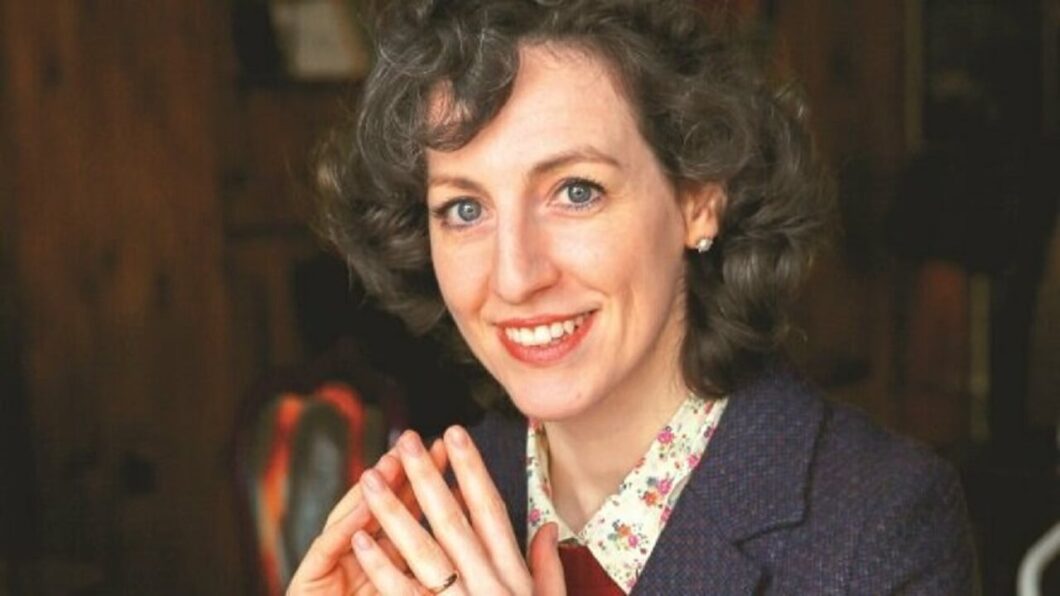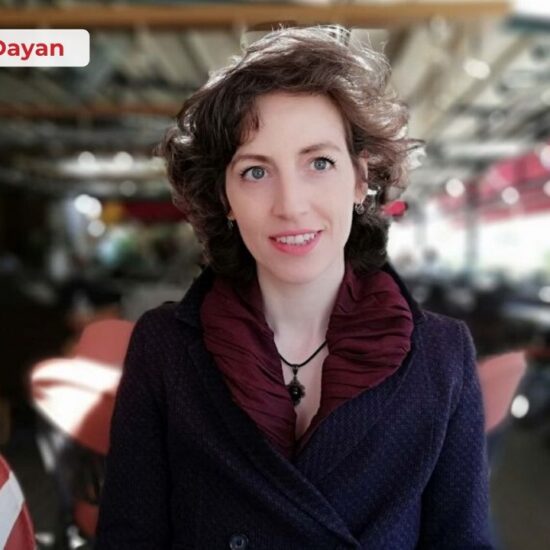Disparöni is Nihan Kaya’s latest novel. Kaya mentions that the title might seem unclear at first glance, but once the novel is read, readers will realize that the title is quite fitting. The author focuses on both the horizontal and vertical aspects of life, emphasizing everyday horizontal life and the inner, spiritual vertical life. She adds: “Confronting the vertical life means confronting ourselves.”
We spoke with Nihan Kaya about her latest novel Disparöni, published by İthaki Publications. As a psychologist, Kaya reflects her psychological background in her novels. She states that all great writers are also great psychologists. She points out that all her books are related to the concepts of horizontal and vertical life. “The horizontal life is the physical, daily, mundane material life we are born into. The vertical life, on the other hand, relates more to literature, philosophy, and art, symbolizing the depth of life. Moving in both horizontal and vertical directions at the same time is very difficult. Because life pulls us into the horizontal direction, and when we get caught in the whirlpool of the horizontal life, we may not see the vertical life. Facing the vertical life means facing ourselves.”
– In the plot of the novel, there are ups and downs. Was this developed spontaneously, or did you plan it out?
It was something I planned. Flashbacks and time shifts are very important in my novels. Because in life, we live in the present, but the present is never just the present. There is always something from the past that influences the present. In the novel, we first see who Cem is in the present, and who Feraye is. Then, through the fluctuating structure of time, we understand why Cem and Feraye are the way they are.
– The main characters of the novel, Feraye and Cem, both have two pivotal moments in their lives. Feraye loses her twin, and Cem has a strained relationship with his father. Would they still be the same Cem and Feraye if these pivotal moments hadn’t occurred?
This is what makes Feraye, Feraye. We all have twin selves inside us. That’s why Feraye’s twin dies when she’s a child, and Feraye continues to grow, but the child inside her dies. Symbolically, the death of the inner child means the death of our potential to renew ourselves, to bring out another self, and to be creative.
– What else affects our creativity?
The whole world works to suppress creativity. No educational system strives to make children artists. Only ten percent of children who display great talent continue to have that talent as they grow. Staying creative isn’t easy. As Jung said, everything works against the birth of the child. Despite all this pressure, that creativity, the urge to write, create art, and renew ourselves is connected to the child within us. Actually, we all have a dead self inside us.
– So, we could say that what brings Feraye and Cem closer is not the death of a family member, but the death of the child inside them?
Yes, that’s right. Cem’s father’s death is separate, but it’s also a turning point. He rejects the internal self. He chooses to open himself completely outwardly. While Feraye searches for salvation inside, Cem does the opposite, but neither finds what they are looking for.
– The novel discusses horizontal and vertical life. Does the horizontal life correspond more to external daily life, while the vertical life corresponds to the inner, spiritual life?
The concepts of horizontal and vertical life have been something I have been obsessed with since I was 18, and I explain everything in terms of horizontal and vertical. Even complex thoughts become clearer when explained this way. All my books are essentially about horizontal and vertical. Horizontal represents the physical, everyday, ordinary material life we are born into. Vertical, on the other hand, represents the deeper life associated with literature, philosophy, and art.
– So, aren’t these two concepts opposites?
Horizontal and vertical are not opposites. However, they move in almost ninety-degree different directions. That’s why, when you go to a museum and a piece of art deeply affects you, you are physically standing there horizontally, but you need to delve into it vertically. It’s very difficult to move in both horizontal and vertical directions at the same time. Life pulls us toward the horizontal, and when we get caught up in the horizontal whirlpool of life, we may fail to see the vertical. In fact, confronting the vertical life means confronting ourselves.
DON’T RICH PEOPLE HAVE STORIES TO TELL?
– Feraye and Cem both come from wealthy families. There’s a brief section in the novel that touches on class differences. Why didn’t you explore this issue further?
In one of his articles, poet Hüseyin Peker mentioned that rich people don’t have stories to tell. He accepts those who are like him, the ordinary, and tries to pull the upper class down and the lower class up. Here, I wanted to draw attention to this. Generally, societal norms, families, and life are there to standardize children. That’s why I focused on non-ordinary people. When you want to step outside the norm, society constantly tries to pull you back into the ordinary. I wanted to depict the conflict they experience.
– The title of the novel is very intriguing. Disparöni. Why did you choose this name?
The title of the novel doesn’t appeal to the market at all. On the other hand, that’s exactly why it suits the main character, Feraye. Because Feraye is a specialist in dead languages and represents the vertical. Just like how life doesn’t understand Feraye, we don’t understand the word disparöni at first glance. However, after reading the novel, we think, “Yes, this is very fitting.” Disparöni refers to the pain of two things coming together. Feraye and Cem can’t come together, and they suffer. This also symbolizes the inability of the horizontal and vertical lives to come together. We all have a horizontal and a vertical life inside us, but because they don’t come together properly, we suffer.
– The novel questions existence. There’s both a philosophical and psychological dimension to existence. Because Feraye is someone who is more vocal about the search for existence, and she also struggles with the idea of not existing, doesn’t she?
Actually, both of them have a problem with existence. Anyone who doesn’t have a problem with existence doesn’t write books, doesn’t engage with literature or any form of art. All true works of art and literature deal with existence, one way or another.
– In your previous books, dreams were also an important element. In this novel, the dream plays a key role in resolving the plot. What makes dreams important for you?
Like novels, dreams are symbolic expressions of reality. All the people we meet in a dream, even the inanimate objects, represent parts of ourselves. This is why dreams are a great source for analyzing our situation.
LITERATURE AND PSYCHOLOGY INTERTWINE
– Towards the end of the novel, there is a shift towards a more poetic style. Why did you choose to use a poetic narrative in that part?
Because I was telling a poetic moment, I thought it was necessary to write poetically. Feraye is a woman who has not left her house for years, and Cem takes her by the hand and leads her outside. The moment she first feels the cold air on her skin is poetic. I wanted to show the poetic side of their inner dialogues by intertwining their thoughts.
– As a psychologist, you are closely engaged with the inner world of people. How has this aspect of you influenced your writing journey?
I see all the great writers I’ve read as great psychologists. Similarly, I see all good psychologists as writers. I don’t separate literature and psychology because both focus on what’s beneath the surface, not the visible. But the truth is, I didn’t write these books because I was interested in psychology. I’ve been interested in psychology since a very young age, and that’s why I studied it. Even without a psychology degree, I would still write texts with psychological content.
Hatice Saka
April 11, 2018
Source


